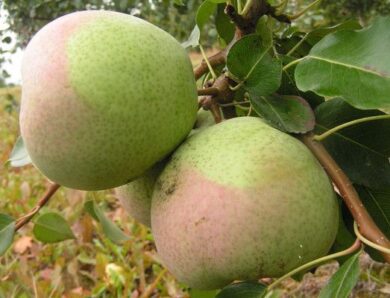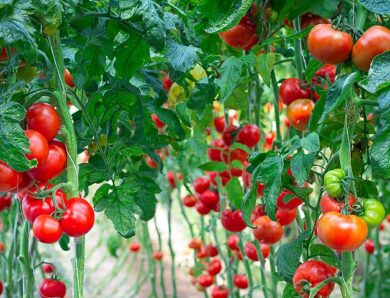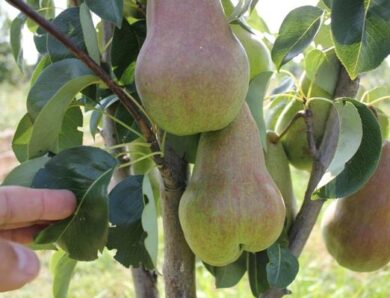How to store arugula: preparations for the winter in different ways
Harvest storage, grown in the garden, is a very important procedure. After all, with the wrong approach, you can spoil hard-grown vegetables and fruits. Especially often people try to preserve greens, in particular arugula, which in the cold season is an excellent source of vitamins. This article will tell you how to save arugula correctly.
Features of green
Arugula is a salad plant, which belongs to the Cruciferous family. People eat green leaves, which are characterized by a pronounced bitter nutty-peppery taste. Therefore, the people still call it otherwise, than mustard grass. The leaves can be made as unusual salads, and spicy sauces.
Arugula leaves contain many nutrients:
- vitamins (it is especially rich in vitamins E., B, A, C, K);
- essential oils;
- mustard oil;
- tocopherol;
- phylloquinone;
- flavonoids;
- macro - and microelements: zinc, magnesium, sodium, selenium, iodine, calcium, phosphorus, manganese and a little iron.
This is a dietary product. Despite such a rich composition, v 100 grams of leaves are contained only 25 kilocalories. Therefore, it can and should be eaten by humans, who are overweight.
Due to its rich composition, this plant is used not only as a seasoning for dishes, but also as an effective folk remedy for the treatment of various diseases. This herb has the following medicinal properties:
- diuretic;
- tonic;
- antimicrobial;
- helps to improve metabolism;
- strengthens immunity;
- helps to improve the digestive tract.
In ancient times it was even considered, that this herb is capable of inducing sexual desire. In the Caucasus with the help of this plant previously fought against scurvy.
Arugula as a cultivated plant began to grow approximately 100 years ago. Before that, people collected leaves from wild grass.
In the course of numerous studies, scientists have proven its benefits to humans, which contributed to the "domestication" of grass. The plant is completely undemanding to soils, on which it grows. Therefore, today it is actively cultivated in Asia and Europe.
After planting the seeds in the ground, the first shoots appear on the fifth day. If they are well watered, then they very soon form the first tender leaves. If desired, arugula can be safely grown at home. The seeds are sown in a pot, which allows you to create a small garden on the windowsill. The same, who does not want to bother with growing this spicy herb at home, can just harvest, grown on his land in the summer.
Video "Growing"
You will learn from the video, how to grow fragrant arugula.
How to store
That the harvested arugula had all its useful properties, you need to know some nuances. After all, not everyone knows, how to properly harvest this plant. Before harvesting the grass, you need to choose the best harvest. To do this, the leaves must be well inspected and choose only those, which have a bright color. The leaf blade of the plant should not be damaged, with traces of disease or activity of insects. Not only home-grown crops should be inspected, but also bought at the market or in a supermarket.
The answer to the question "how to save arugula for the winter" will depend on the chosen method. To date, there are several ways to store this spicy herb:
- in dried form;
- in the refrigerator.
To decide, which method will be more effective in terms of preserving the beneficial properties of the plant, you need to know both options. Therefore, consider them in more detail.
The best way to store this spice is to dry it. However, arugula should be dried in a special way, so as not to lose all its precious properties. Preparation of dried grass is carried out according to the following algorithm:
- we select good and fresh greens;
- it is well washed with water;
- then cut the leaves into small pieces and spread them on a baking sheet or newspaper;
- then the greens must be dried. To do this, it is recommended to place the chopped greens in a warm dark place. Drying should continue 5-6 days.
Drying of a plant in an oven is allowed. However, you need to remember when choosing this drying option, that the temperature in the oven should not be higher +40 degrees. The leaves should be laid out in one layer, which provides better and more even drying.
When the grass is well dried, it must be poured into a glass jar, in which it will be stored. In this form, the dried product is suitable for use during the year, and there the new harvest will ripen.
In dried form, this culture is used as a spice for meat and fish, and also added to stewed beans and various broths.
The second way to store grass is frozen. In this case, the process of preparation for storage of the leaves themselves is little different from the first method. The plant also needs to be washed well, cut into small pieces and dry a little. Drying in this case is aimed at removing moisture, which remains on the leaves after that, how they were washed. When the arugula dries a bit, it is packaged in plastic bags. For convenience, the grass can be placed in plastic tubs, if there are extra. Sudochki are considered the more optimal option, as the package may be damaged during storage. Store utensils and bags in the freezer.
This method of storage allows you to keep the leaves fresh until winter. Therefore, in this case, arugula can go as a full component in a variety of salads.
Storing the plant in the freezer, leaves can not be cut into small pieces, and freeze whole. To do this, they need to be rinsed well with water and laid out on paper napkins. In this form, the leaves should dry. Moisture should not remain on their surface, otherwise it will negatively affect the product.
When the leaves are dry, they are decomposed into containers and sent to the freezer. Remember, that the containers do not need to be heavily stuffed with leaves. There should be some free space inside, to make it convenient to remove the leaves in the right amount. Importantly, so that the leaves do not come into contact with air during storage. Therefore, they are often hermetically wrapped with film. Otherwise, they may absorb the odors of other products, stored in the freezer, which will give them an unpleasant odor. Therefore, when using containers and other containers, the cover should always fit snugly, creating 100% tightness.
Whole frozen leaves are suitable for salads. They can be fried to obtain a paste.
Experts note, that the plant can be stored frozen for up to a year. Therefore, it is desirable to use both methods of storage. In this case, when the frozen leaves run out, you will still have dry seasoning.
Going to keep arugula at home, the following points need to be remembered:
- purchased or plucked greens should be sent immediately for drying or refrigeration, since it loses its vitamins very quickly. For the same reason, it is not recommended to buy spice in stock. The only thing, what can be done in this situation - to wrap the tails of the plant with film. In this form, fresh herbs can lie for several days longer;
- finely chopped leaves can be poured into cubes with oil. As such, they can be stored in the refrigerator;
- store bags or containers with arugula in the freezer on the bottom shelf.
Arugula is a valuable product, rich in many nutrients. It is easy to grow in the garden, and at home. Therefore, eating it will improve your health. Therefore, the issue of storing this spicy herb at home is considered very important today, as it allows people to get nutrients all year round. Proper adherence to the harvest of the leaves of this culture for the winter will allow you to maintain vigor and health throughout the year.
Harm and Benefit Video
You will learn from the video, what harm and what benefit from arugula.




